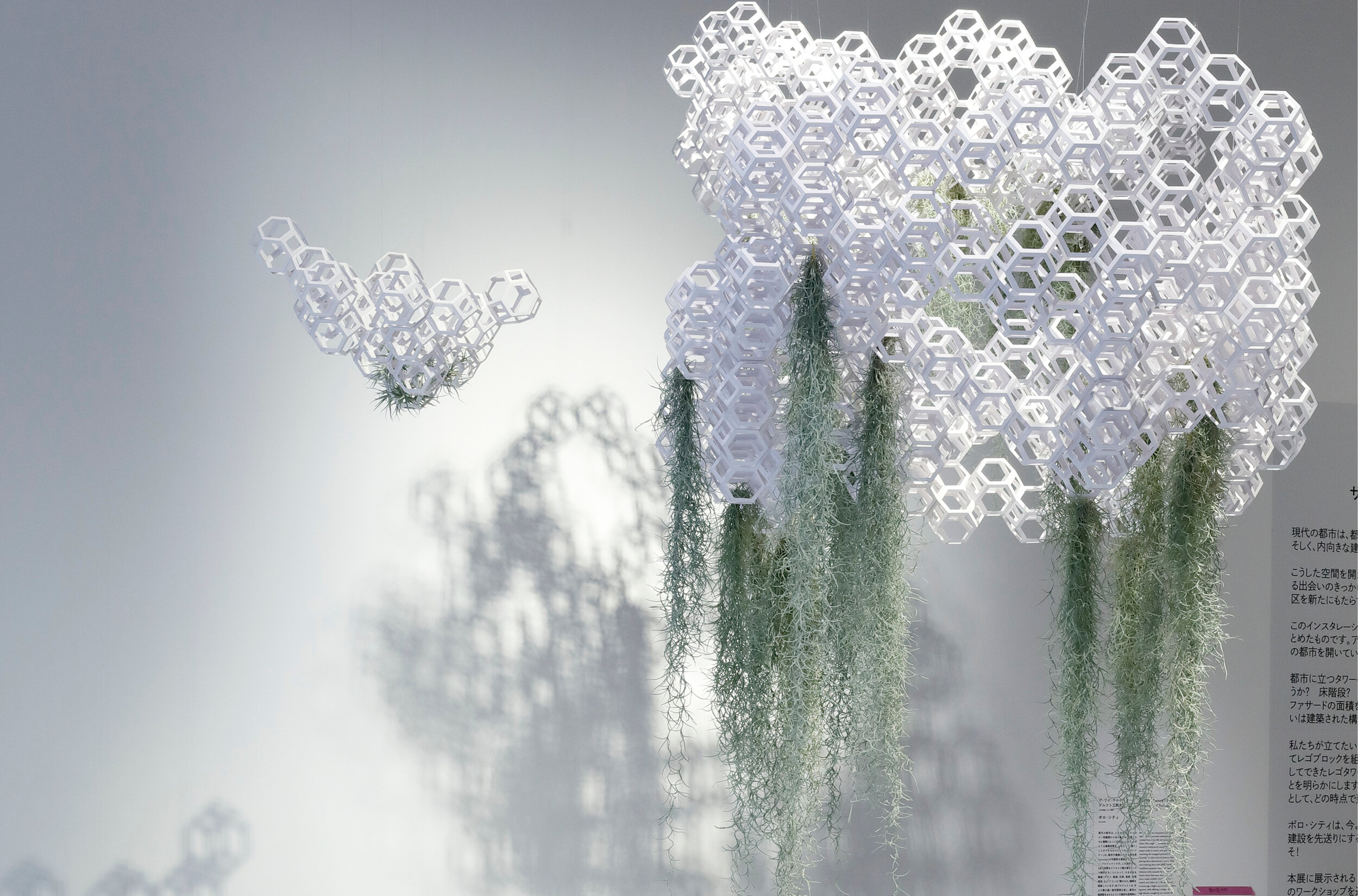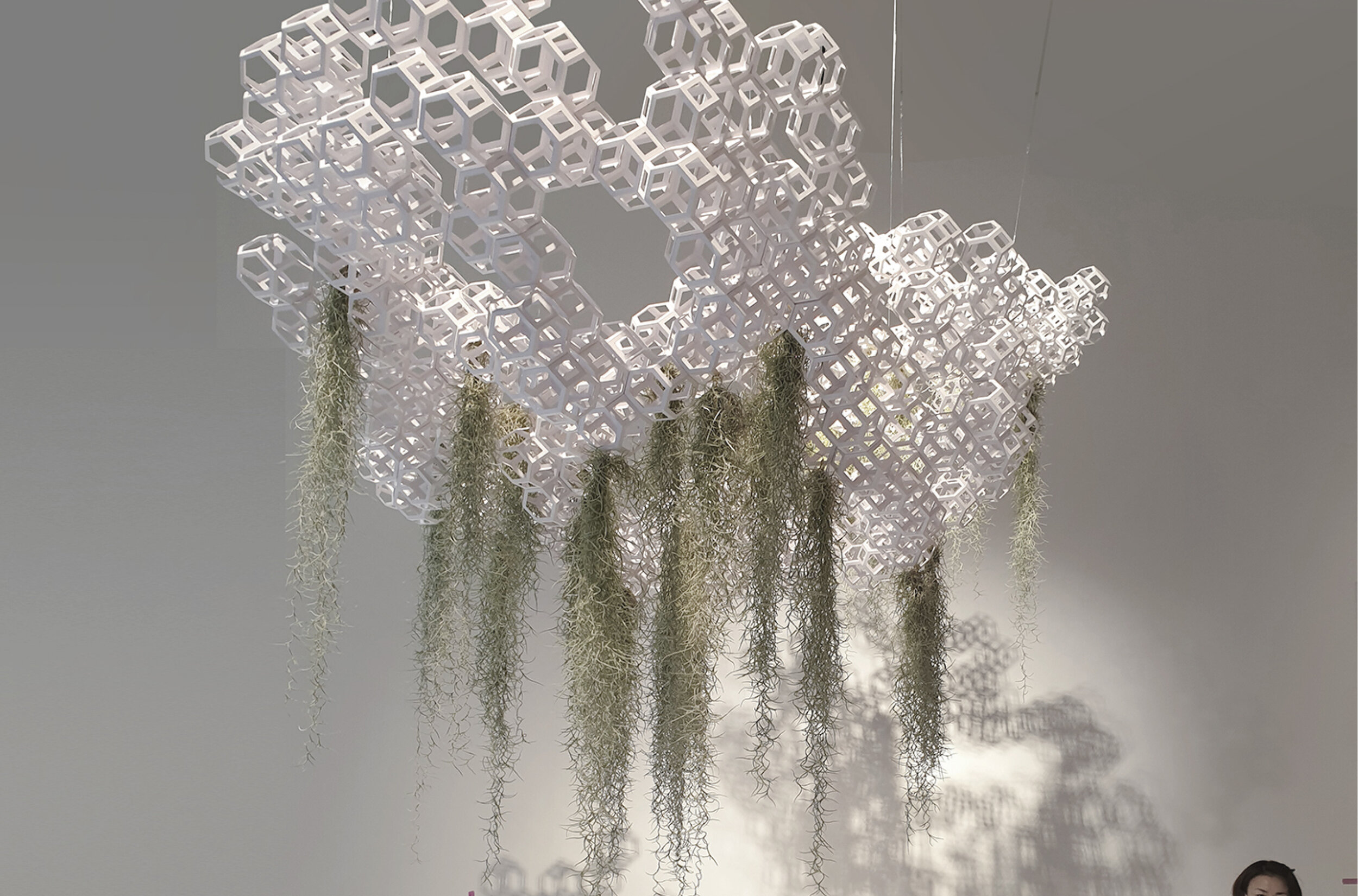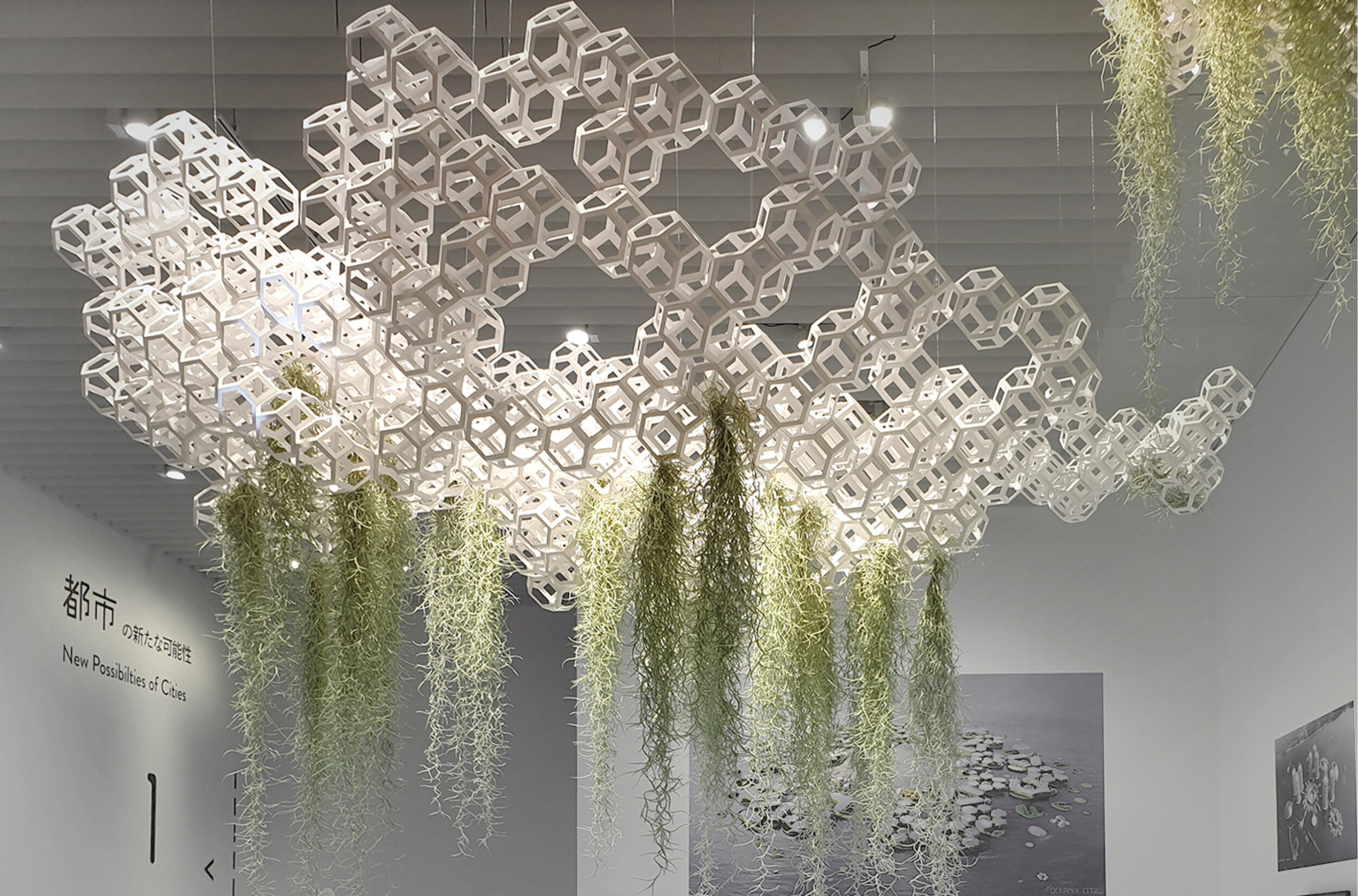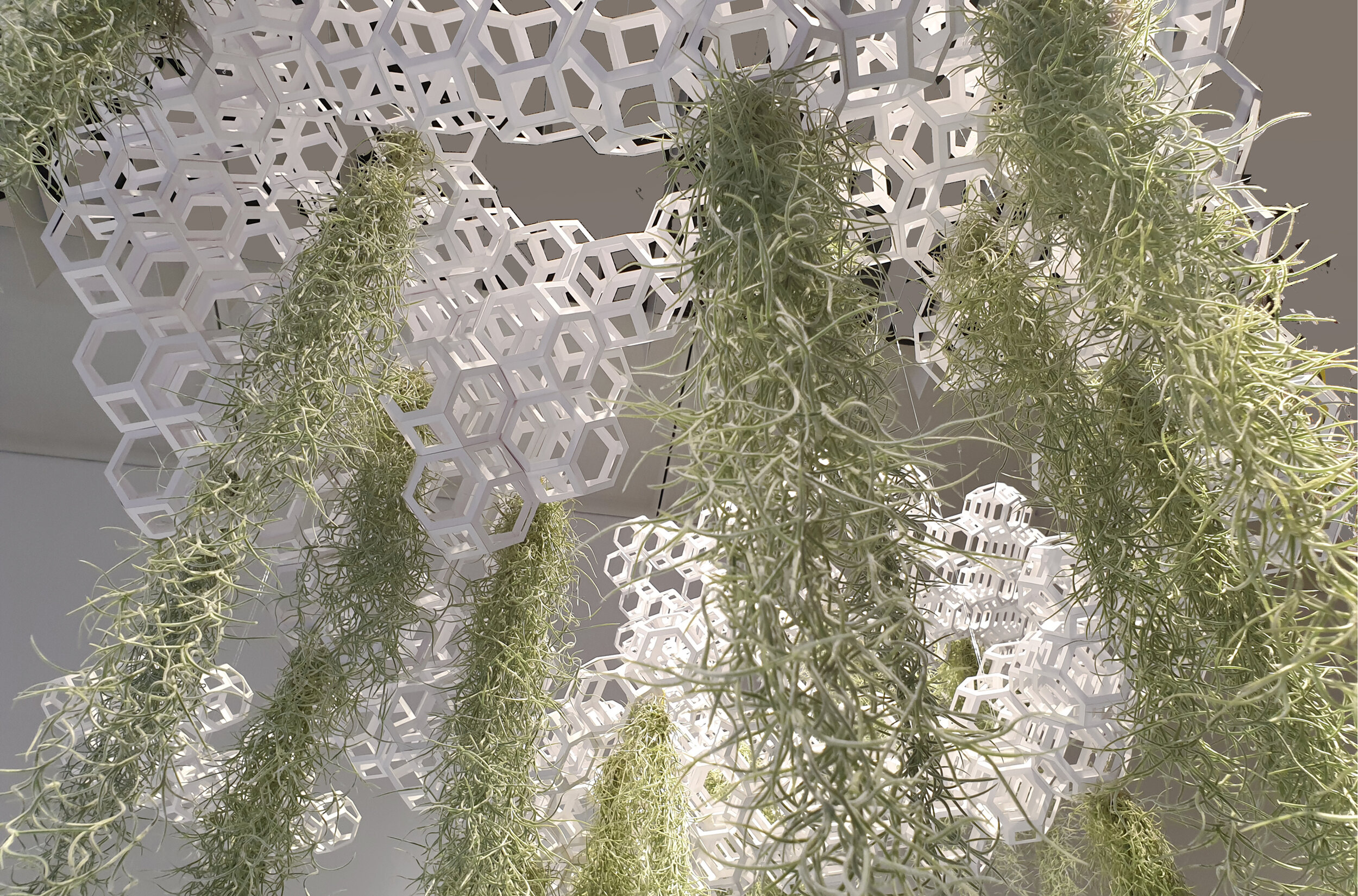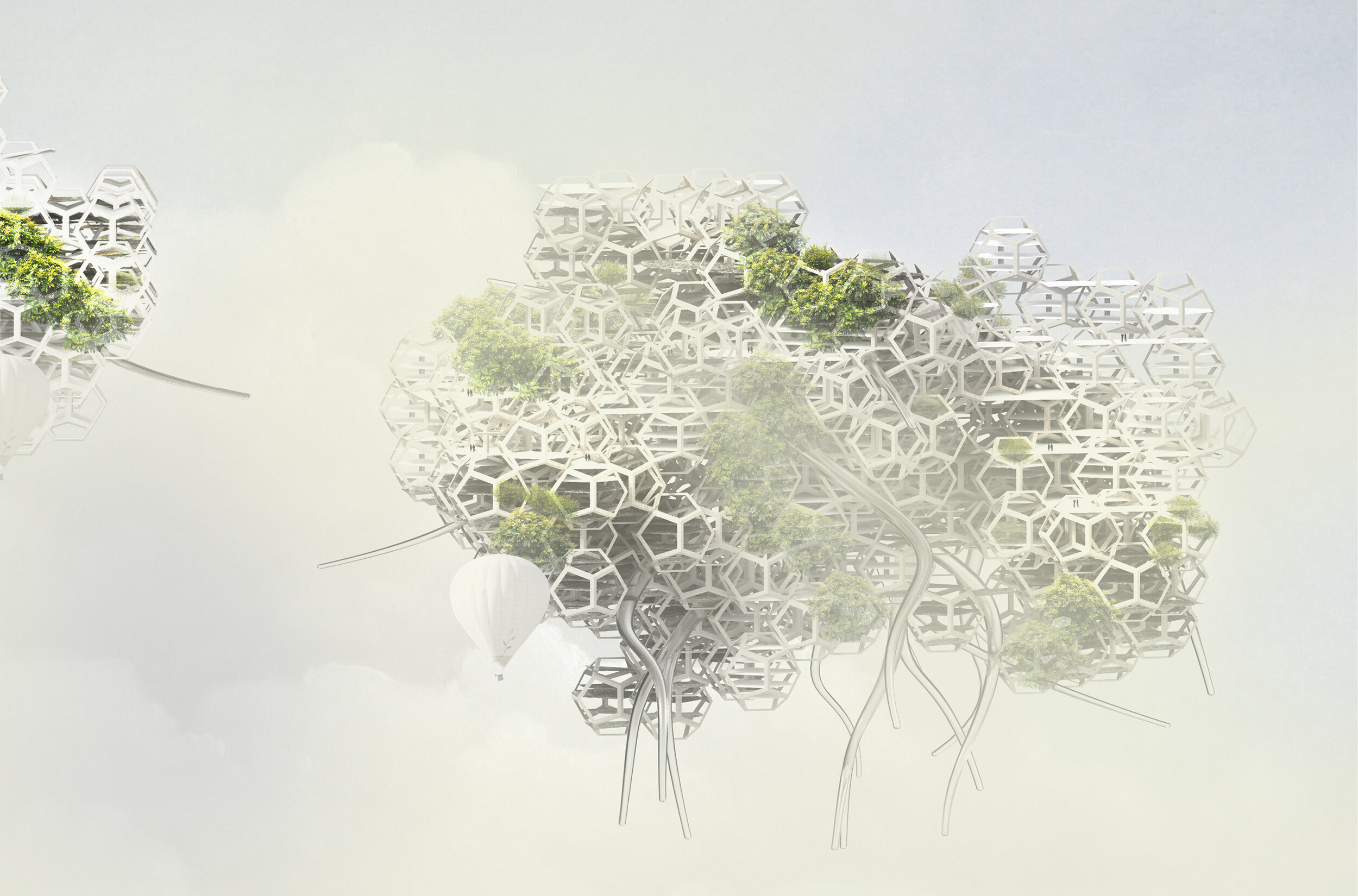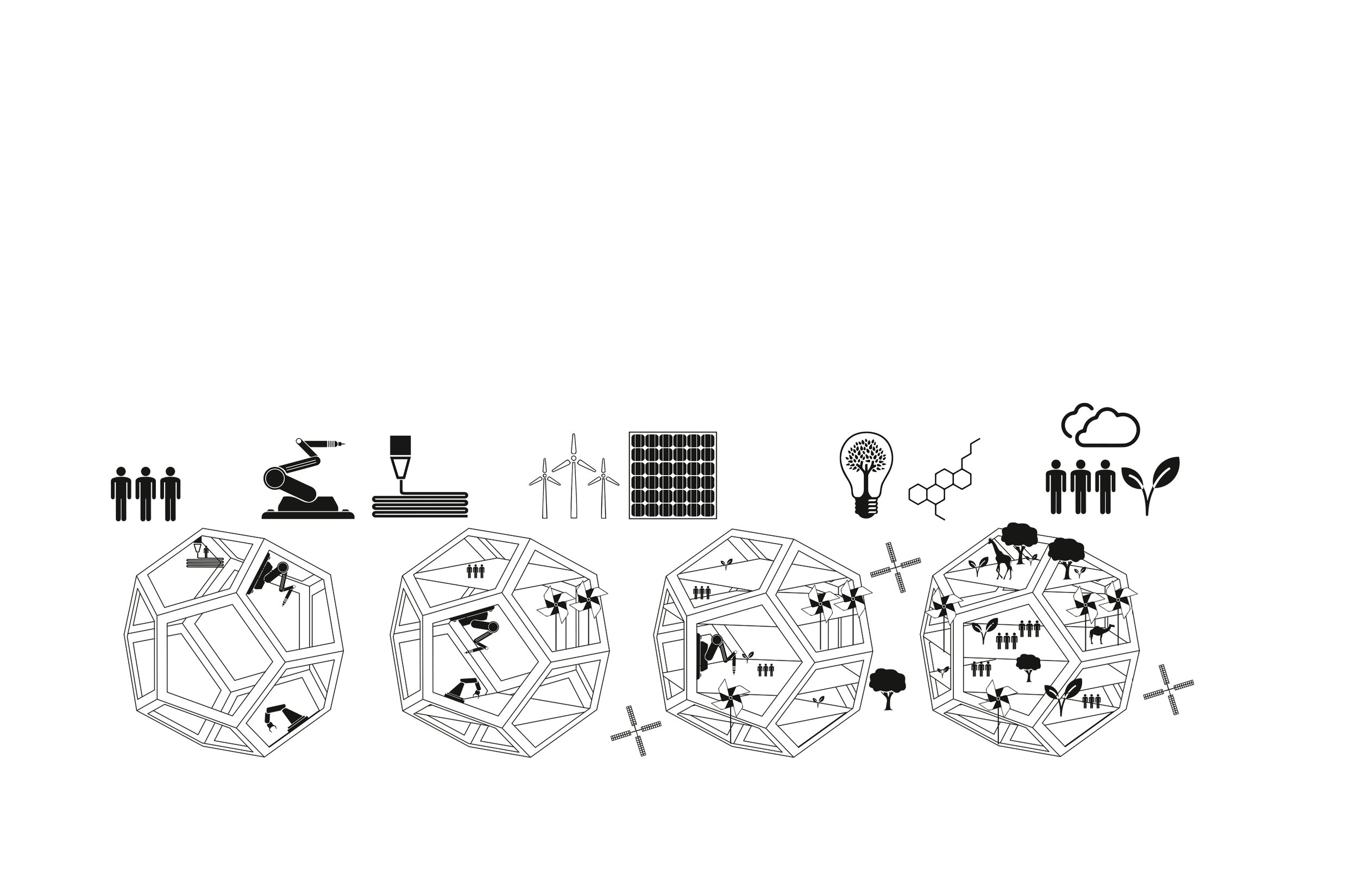XCLOUD | Lab_x
XTU ©
X_CLOUD | Installation : Future and the Arts: AI, Robotic, Cities, Life - How Humanity Will Live Tomorrow, Mori Art Museum, Tokyo, 2019-2020
Description: In 2050, warming temperatures and pollution made cities uninhabitable. The old model of the hyper-connected metropolis in a world of mobility, as imagined at the star t of the 21st century, is being called into question.
Is hyper-density the only solution?
Has congestion exceeded its limits?
Some wonder about the «human balance» of metropolitan areas. The health of populations falters, accidents multiply, the city becomes toxic. The inhabitants take to the streets, and demand the right to breathe freely, as a fundamental human right!
And suddenly, it calls into question cities and land-use planning, imposed mobility, the billions of human years spent in transport, the time of life and what we do with it.
Is all this necessary? Does this meet the real needs of humanity?
In a critical context of scarcity of resources, don’t the metropolises manufacture « artificial needs «, transport, representation, consumption, and in a way a new easement? Would the industrial model of the petroleum civilization be out of date ? Experiences of atomized cities, of urban villages in the countryside, are multiplying and we reinvent old territories. The redesigned autonomy gives new possibilities, and many cities are shrinking. Everywhere the use of the soil is becoming an issue, for agriculture, for new urban dwellers and tensions appear.
Cloud City provides an “above ground” solution to this, by colonizing the sky!
Cloud City is based on aero-cargo technology developed at the dawn of the 2030s. Aero-cargo, inspired by the ancient zeppelins indeed provides an unprecedented solution: it hardly consumes, can carry very heavy loads, and does not require a road or permanent equipment. Few resources, overall, the ideal in a post-oil civilization! The aerostats assembled in modules carry the living spaces, the greenhouses above ground, and all the equipment necessary for a life in autonomy. The modules aggregate, connect, sometimes disintegrate to join other Cloud Cities. We walk there, the distances are not long. We all know each other, it’s a village. It is a living space, a «colony in the air» stationing beyond the layers of pollution. It moves to be at the optimum of climatic conditions. It chooses its altitude, and decides on the rain or the sun. Because it draws its water from the condensation of clouds, and the wind gives it its energy. An aggregated, metabolic city, which seems to have escaped from an Archigram Utopia.
A biomimetic city too, inspired by colonies of microorganisms and nature. It practices autonomy, and provides for its own needs. As in a space station, everything here is recycled, re-circulated, water, organic matter, plants, objects. Biotechnology, and living things transform waste into resources. Greenhouses in aquaponics, bacteria and microalgae recycle water and produce food. It becomes a model of circular metabolism. And soon a wild life appears in places, carried by the wind, which colonizes the structures, the terraces, draws the outline of a forest, as in a sky island. Locals come here for clean air, the freedom to breathe without a mask. They live here, with the minimum, because you have to be light, not burden yourself, they experience simplicity. There is no property. And that saves them time, allows them to practice new things, new values. They work less, waste less time, discover that the value is in themselves and in others, in exchange, speech, culture too. The Cloud Cities, spread in the clouds, swarm the sky. And sometimes they gather, in summer, to shade the cities, like big umbrellas aggregated in clouds.
Situation: SKY
Team: project directors: Anouk Legendre, Nicolas Desmazières + Erwin Sauveton, Guillaume Martin, Hugo Tell
exhibited at the mori museum | tokyo
